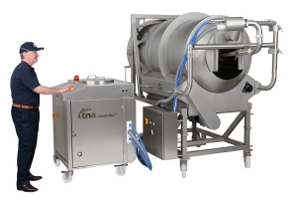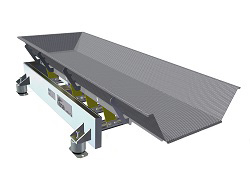Food Processing Trends 2024
trends | 6 mins read
January 15, 2024
2024 is all about the process
As we approach 2024, there are trends both existing and emerging that food manufacturers must keep in mind to continue to exceed the expectations of their customers and the all-important end-consumer. The industry continues to be placed under the microscope, and challenges persist that have brought the relationship between manufacturer and processing partner closer than ever before. This a good thing, as together we are stronger and better equipped to provide solutions that not only speak to those trends, but that deliver greater value at the same time.

What will be the focus in 2024 in terms of trends?
Our experiences in the processing world come from first-hand observations, which are made possible through the close working partnerships we have with our customers. We can feel the pain points biting and focuses shifting in areas such as:
Raw material prices:
Navigating raw material cost fluctuations is a daily concern, with many factors having a direct influence. In Northern Europe, for example, a recent article in invezz[1] outlined that hostile weather, suboptimal harvesting conditions and excessive moisture in the soil have led to falling yield and increased waste. Meanwhile, wider geopolitical crises that continue to stress global supply chains are also creating uncertainty.
To mitigate the impact of raw material price volatility, optimisation of processes is key. Anything that can be done to reduce raw material waste adds significant value whether prices are unfavourable or not, and working with a complete solutions partner that understands the process will pay dividends.
If we take seasoning as an example, the tna intelli-flav® OMS 5.1 ensures consistent and precise seasoning coverage for a variety of snacks, including fried, puffed, and baked products. The system was created in response to demand for greater control over seasoning, a factor that significantly affects input costs, waste costs, consumer satisfaction, and repeat purchases. This advanced OMS system delivers the necessary precision and control, fostering trust and transparency with consumers. Moreover, it aids in reducing food waste. By weighing raw materials and utilising intelligent control and monitoring software, the system applies the precise amount of seasoning or oil specified by the pre-set recipe. This efficiency minimises raw material waste and ensures consistently seasoned products.
Energy efficiency:
Energy prices also continue to have an impact on food manufacturers globally. According to the International Energy Agency (IEA), wholesale electricity prices remain elevated in many countries despite substantial declines – although there are regional differences. The IEA electricity Market Report[2] suggests that as prices for energy commodities such as gas and coal have fallen significantly in the first half of 2023, wholesale electricity prices in many regions have declined from their previous peaks.
On the face of it this would appear to be good news. In Europe, for example, wholesale prices have halved from their record highs in 2022, falling closer to their 2021 average. However, prices are still more than double 2019 levels. In India, meanwhile, average wholesale electricity prices in the first half of 2023 were still 80% higher than 2019 levels, while in Japan they were 30% higher. Wholesale electricity prices in the United States, by contrast, have almost reduced to 2019 levels.
Energy conservation is vital to maintaining high efficiency, and we must look to innovative solutions on the line to deliver the gains necessary. If we take frying as an example, during the process a lot of moisture is lost through evaporation, which is generally discharged to the outside of the factory via the fryer stacks. By employing a frying vapour heat recovery system that converts evaporated moisture into hot water, this can then be used to pre-heat the water in the drying process, significantly reducing the need for saturated steam from the boiler. Operational costs for drying can be reduced by approximately 70 to 90% as a result, boosting efficiency and promoting more sustainable operations.
Rethinking waste
Finally, there is a light shining brightly on excess waste in the food manufacturing industry, which of course is inextricably linked to sustainability in terms of processing operations. As we have outlined, raw materials are expensive, and the energy used to process them is still only available at elevated price levels for most. We must, therefore, look at the manufacturing process holistically to ensure we are getting the most out of what we put in at the beginning. This involves working with your complete solutions partner to identify areas that can be enhanced, or where technological advances make sense to implement.
Optimising oil use is a great example, as it is a valuable resource we can help our customers preserve. Our frying systems consistently maintain oil integrity, incorporating continuous oil filtration systems to help remove particulate material left behind from sliced products during cooking. The sooner and more effectively these particles are removed, the better the oil quality, thus preserving this resource for more efficient and sustainable use.
Additionally, potato product producers could advance circularity by reconsidering the use of what is currently labelled as waste. Rejects from a French fries line, for example, are currently discarded despite being perfectly fine in quality, albeit not in shape. We work closely with our partners to explore whether such rejects, as well as slivers and nubbins, could be transformed into a “Value Added” product like Hash Browns, Formed Potato Products, or even Potato Flakes.
Refocus on the things you can influence
It is very easy to get bogged down when looking at trends and to take an eye away from the fact that process optimisation is the answer to many of the most pressing concerns facing the industry both today and in the future. Working with a complete solutions partner gives you a true helicopter view of your line and where each of those trends can be addressed along it. From reducing raw material and energy waste to saving oil and packaging materials, we have only just begun to scratch the surface of what is possible.
To begin your journey to a more optimised process that adds value to your bottom line, to your sustainability goals, and most importantly to your customers, contact us today to talk it through.
About TNA solutions
TNA solutions is a global leader in food processing and packaging solutions, committed to helping people succeed responsibly in a changing world. With over 40 years of experience, TNA’s global team of experts have installed more than 14,000 systems in over 120 countries. The company creates and sustains solutions that help customers realise goals and exceed their expectations, with performance, responsibility, and a customer-centric approach at the core of the business. A collaborative, consultative approach ensures measurable results and lasting success, with solutions designed to evolve and perform over time. As an inclusive partner, TNA supports a growth agenda that goes beyond business, emphasising its commitment to people, prosperity and the planet in harmony. TNA is a powerful advocate of social justice, and aims to support children in disadvantaged communities through education, healthcare, and social enterprise programmes, through the humanitarian initiatives undertaken by the Nadia and Alf Taylor Foundation.
TNA feeding ambitions
[1] https://invezz.com/news/2023/11/24/a-snapshot-of-the-global-potato-market-amid-nightmare-polar-vortex/
[2] https://www.iea.org/reports/electricity-market-report-update-2023/executive-summary


























